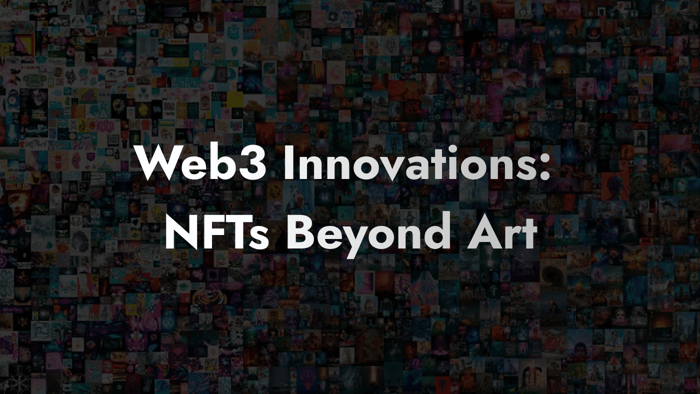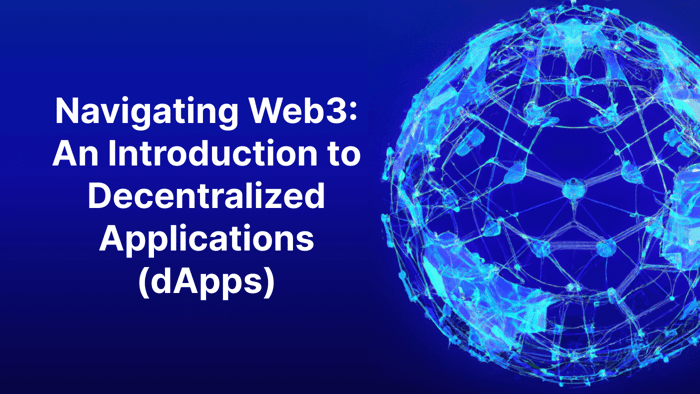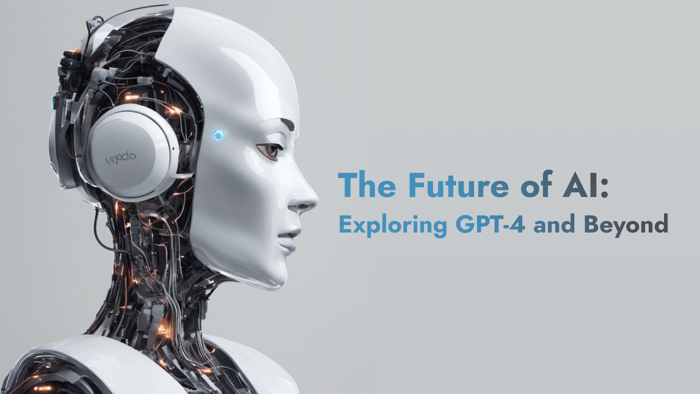Gain a comprehensive understanding of NFTs one of the groundbreaking Web3 innovations
Non-fungible tokens (NFTs) have emerged as transformative digital technology, unlocking new dimensions of ownership and value on the blockchain.
NFTs aren't just about digital art – they're the game-changers of Web3, introducing a fresh way to interact with digital assets. Imagine tokens that evolve, adding a dash of excitement to your ownership experience.
In this article, we're not diving into complicated jargon; we're taking a stroll through the transformative impact of NFTs on our digital world. No need for techy confusion – just a peek into the opportunities and challenges brought by this groundbreaking tech. Let's demystify NFTs together, going beyond the buzz to see how they're shaping the way we live, create, and connect in the Web3 era.
What are NFTs?
Non-fungible tokens (NFTs) mark a groundbreaking evolution in our approach to digital assets. Initially introduced on the Ethereum blockchain through the ERC-721 token standard, NFTs were conceived as a solution to represent ownership of unique and indivisible digital items. This standard outlines a set of rules and protocols that enable the creation and management of NFTs, ensuring their distinct attributes and ownership history are securely stored on the blockchain.
Since the inception of NFTs, their popularity has transcended the Ethereum blockchain. Various other blockchains, such as Binance Smart Chain (BSC), Flow, and Tezos, have embraced NFTs, each implementing its unique token standards like BEP-721, Flow NFT, and FA2, respectively. This proliferation of NFT standards across blockchains has expanded the scope and accessibility of the NFT ecosystem, allowing creators and collectors to explore diverse platforms and communities.
The underlying blockchain technology guarantees the decentralized and transparent verification of ownership, assuring both creators and buyers that the provenance and authenticity of each NFT are immutable and easily traceable.
While the initial spotlight on NFTs has often been in the art world, their applications extend far beyond. NFTs serve as cryptographic certificates of authenticity and ownership, applicable across various industries. Let's explore key areas where NFTs are reshaping the digital landscape:
- Digital Collectibles: NFTs have revitalized the concept of digital collectibles, creating a paradigm where ownership is authenticated and scarcity is guaranteed. NBA Top Shot and FIBA World Cup stand as an exemplar, allowing basketball enthusiasts to own iconic moments as digital collectibles.
- Gaming Revolution: The gaming industry has witnessed a revolution with NFTs, providing players with true ownership of in-game assets. Games like Axie Infinity, Decentraland, Chainmonsters, Ember Sword, or Forest Knight enable players to buy, sell, and trade characters and items on the blockchain, ushering in a new era of player-driven economies.
- Virtual Real Estate: NFTs facilitate the ownership of virtual real estate, with platforms like Decentraland offering parcels of virtual land as unique digital assets. This not only extends the concept of ownership to the virtual realm but also opens up avenues for immersive online experiences.
- Entertainment: NFTs have found applications in the entertainment industry across music, fashion, and sports. Musicians release limited-edition albums as NFTs, providing fans with unique opportunities. Fashion brands collaborate with digital artists for exclusive NFT fashion items, while sports organizations offer NFTs representing exclusive access or memorabilia.
NFTs as Catalysts for Digital Transformation
NFTs serve as powerful catalysts for digital transformation, fundamentally altering traditional business models across industries. By tokenizing real-world assets, businesses can represent physical objects or concepts in a digital form, introducing new possibilities for ownership, transferability, and monetization.
The decentralized nature of blockchain technology ensures transparency, immutability, and traceability of NFT transactions. Beyond these inherent benefits, NFTs introduce programmability through smart contracts. These contracts can dictate specific conditions for ownership transfer or revenue-sharing, paving the way for innovative business models.
Building Digital Communities with NFTs
NFTs are not merely assets; they are powerful tools for building interactive and inclusive digital communities. By offering a sense of ownership and exclusivity, NFTs foster strong connections among community members. Let's explore how NFTs redefine social interaction within digital communities:
- Virtual Badges and Status Symbols: NFTs act as virtual badges or symbols of achievement within a community, showcasing an individual's involvement or accomplishments.
- Privileges and Experiences: Certain NFTs grant special privileges or access to exclusive experiences, encouraging active community participation and engagement.
- Shared Ownership: NFTs enable multiple individuals to collectively own a digital asset, fostering collaborative creation and shared ownership within communities.
Real-World Examples
- Bored Ape Yacht Club (BAYC): BAYC is an NFT collection that has evolved into a vibrant digital community. Each Bored Ape NFT represents a unique avatar with different traits, granting owners entry to exclusive events and activities.
- Decentraland: This virtual world allows users to buy, sell, and trade virtual land and items as NFTs. Users can create their digital experiences, interact with others, and participate in various community events.
As interest in NFTs grows, innovative applications for building digital communities continue to emerge. Virtual art galleries, fan-driven projects, and virtual worlds dedicated to specific interests represent potential areas for growth.
Embracing the Potential of NFTs Beyond Art
When considering the adoption of NFT technology, businesses and individuals must carefully weigh the following pros and cons:
Pros
- Proof of Ownership: NFTs provide a secure and transparent way to prove ownership of digital assets, reducing the risk of fraud and counterfeits.
- New Revenue Streams: Embracing NFTs can open up new monetization opportunities for creators, allowing them to tokenize various forms of digital content.
- Enhanced Engagement: NFTs can foster deeper connections with audiences through unique digital experiences, creating a sense of exclusivity and community.
Cons
- Legal Implications: The legal framework surrounding NFTs is still evolving, raising questions about copyright, royalties, and intellectual property rights.
- Environmental Concerns: The energy consumption associated with blockchain technology, particularly in minting and trading NFTs, has sparked debates about its environmental impact.
Before venturing into the world of NFTs, it's essential to consider several key factors:
- Regulatory Compliance: Understanding the legal and regulatory landscape of NFTs in different jurisdictions is crucial for mitigating potential risks.
- Sustainability: Exploring sustainable practices within the realm of blockchain and NFT technology is imperative to address environmental concerns.
- Risk Management: Assessing the potential risks involved in tokenizing assets or participating in the NFT market is essential for informed decision-making.
By carefully evaluating these aspects, businesses and individuals can make informed decisions about embracing the potential of NFTs beyond art.
The Evolving Landscape of Digital Ownership in Web3.0
NFTs continue to gain traction, poised to reshape the concept of digital ownership and value in Web3. Let's look into the future trajectory of NFTs and explore how they have the potential to redefine traditional notions of ownership in the digital age.
In the Web3 space, NFTs offer creators new avenues for monetizing their work directly, bypassing intermediaries such as galleries or record labels. With the ability to sell digital assets directly to consumers, artists can retain more control over their work and potentially earn higher profits. This shift in power dynamics can potentially democratize access to art, music, and other creative forms.
While NFTs present new opportunities for digital ownership, some challenges need to be addressed:
- Environmental Concerns: The energy consumption associated with blockchain networks has raised concerns about the carbon footprint of NFTs. As the popularity of NFTs grows, it becomes crucial for developers and platforms to explore more sustainable solutions.
- Legal Implications: The legal framework surrounding NFTs is still evolving. Issues such as copyright infringement, intellectual property rights, and the enforceability of smart contracts need to be carefully considered and addressed.
- Market Volatility: The NFT market has experienced significant fluctuations in value, with some assets selling for millions of dollars while others lose value rapidly. Investors and creators need to be aware of the risks associated with such volatility.
Conclusion
In conclusion, NFTs represent a revolutionary force in the digital realm, extending far beyond their initial association with art. By unlocking new dimensions of ownership, value, and community-building, NFTs have become powerful tools for creators and businesses.
As we navigate the dynamic landscape of Web3 innovations, staying informed about the potential and challenges of NFTs is essential. NFTs offer a glimpse into the future of digital ownership, where individuals have unprecedented control over their digital assets, and communities are formed on the principles of exclusivity and shared ownership.
Akava would love to help your organization adapt, evolve and innovate your modernization initiatives. If you’re looking to discuss, strategize or implement any of these processes, reach out to [email protected] and reference this post.




![[Guest Post] Web3 & The Democratization of Digital Assets](https://dropinblog.net/cdn-cgi/image/fit=scale-down,width=700/34251246/files/featured/Web3_DA__Feature.png)
